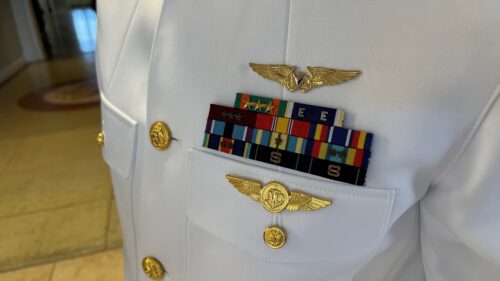In a historic moment for Naval Aviation, the first four Air Vehicle Pilots (AVPs) have successfully completed their rigorous training and earned their prestigious “Wings of Gold.” These exceptional individuals have paved the way for a new era of aviation, combining the strengths of manned and unmanned platforms.

U.S. Navy Photo by Ensign Elias Kaser
The path to becoming an AVP is no easy feat. These individuals underwent a comprehensive training program under the supervision of Chief of Naval Air Training (CNATRA), Rear Adm. Richard Brophy. The training includes primary, intermediate, and advanced AVP training syllabi.
Their training began with the Naval Introductory Flight Evaluation (NIFE), where they honed their foundational aviation skills. Following this, they entered the Primary Naval Air Vehicle Pilot Training System (NAVPTS), utilizing T-6B Texan II simulators. Here, they learned the basics of aviation and gained an appreciation for the operation of traditional manned platforms.
As the AVPs progressed through intermediate and advanced NAVPTS, they received specialized training focused on operating the MQ-25 Stingray. Utilizing Multi-Crew Simulators (MCS), they developed mission-specific skills and tactics. These simulators provided realistic scenarios, blending fleet-derived sensors and adversarial challenges, ensuring their readiness for the demands of their future roles.
Having completed their undergraduate training, the newly winged AVPs will now join the Unmanned Carrier-Launched Multi-Role Squadron (VUQ) 10 at NAS Patuxent River, Maryland. VUQ-10, similar to other fleet replacement squadrons (FRS), is responsible for refining the skills of aviators and preparing them to operate their designated platform within the fleet. In this instance, their focus will be on mastering the intricacies of the MQ-25 Stingray, the cutting-edge unmanned aircraft that will be the Navy’s first unmanned aerial tanker.
For more information, hit the Source below